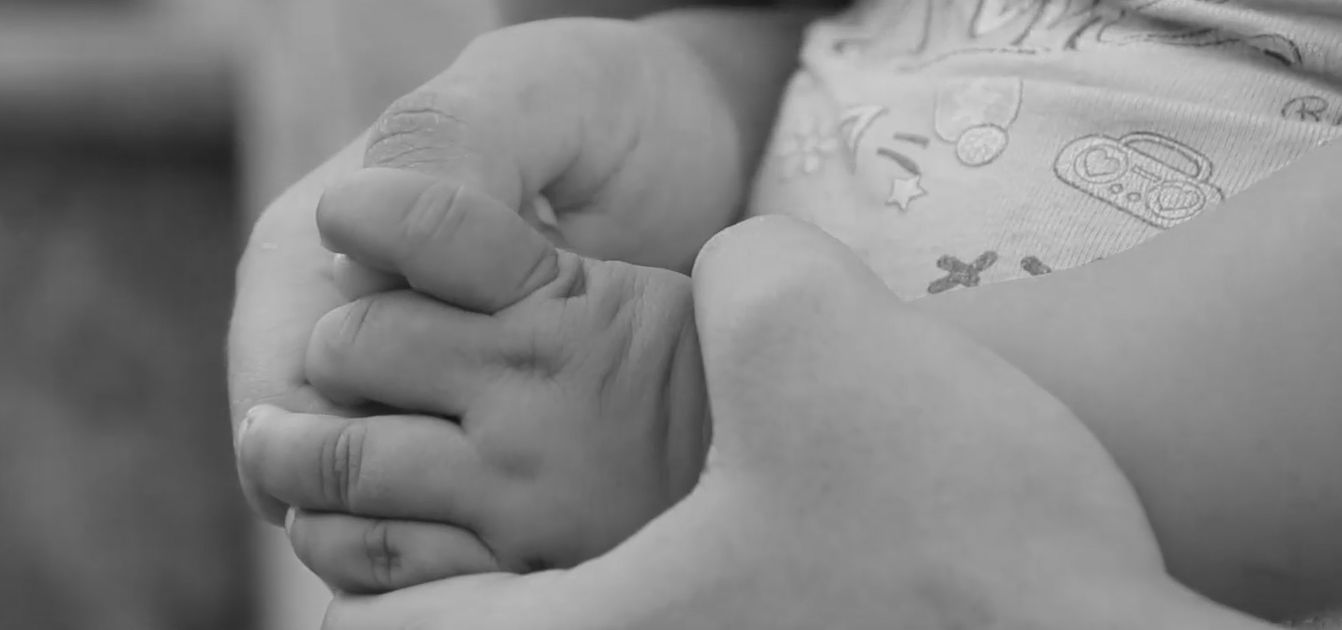
VENEZUELANS ON FOOT
In July 2019, Xchange explored the experiences of Venezuelan migrants traveling through Colombia on foot. The findings are presented in this video-report.
introduction
Extreme hyperinflation, food and medicine shortages, power cuts and stagnating employment prospects have caused the mass exodus of over 4 million people from Venezuela since 2015, making this one of the largest displaced communities in the world. Though the economic crisis is complex with many interplaying factors, mass migration in recent years has been predominantly driven by the country’s imploding economy, alongside political unrest surrounding the legitimacy of Nicolas Maduro’s leadership and shortages of both food and medicine have led to the re-emergence of diseases such as tuberculosis as well as a rise in cases of child malnutrition. The cause of migration from Venezuela is unusual in that it is not violent conflict that is forcing people to leave their homes, but protracted socioeconomic disaster, on a scale never before seen in Latin America.
Venezuela was previously the wealthiest South American nation due to its rich oil reserves, which are responsible for 90% of the country’s foreign revenue, but since 2014 as oil prices plummeted the country’s economy has been in collapse. With hyperinflation currently being the highest in the world, it has become virtually impossible for Venezuelans to continue to purchase everyday necessities with prices, on average, doubling every 19 days by the end of 2018.
Migration throughout South America is no new phenomenon and Venezuela has long been a host nation for migrants from neighbouring countries. However, this current crisis is an unprecedented exodus in the sheer volume of people who have migrated in the past few years and has, as a result, shifted migration patterns across the continent. Historically, migration in the region has been from South to North as ongoing conflict in Colombia led millions to flee violence in search of refuge in Venezuela over the 1980s and 1990s. However, the current economic and political crisis has led to increased southbound migration as thousands of Venezuelans have fled to countries like Peru, Chile and Ecuador. Though migration routes have varied, most Venezuelan migrants have remained in South America, with Colombia hosting the overwhelming majority of Venezuelan migrants - at least 1,100,000 as of March 2019.
As neighbouring countries, Colombia and Venezuela share a long border of 2,219km, making Colombia the logical choice for most Venezuelan migrants, although this route is by no means without its complications. Colombia has also been a welcoming host-nation, largely due to the shared history of migration between the countries. Indeed, despite the 2015 migration crisis following the shooting of three Venezuelan soldiers on the border, which led to Maduro closing this border and deporting thousands of Colombians from the country, the border has since been reopened, allowing for thousands of Venezuelans to now make the crossing into Colombia in search of a more secure and prosperous livelihood.
The waves of migration from Venezuela began in the early 2000s, followed by second and third waves in 2015 and 2017-18. The first wave of migration was comprised predominantly of those who sought to protect family assets or felt persecuted by the new policies under President Chavez’s government. Additional waves took place due to political and social instability after a 2002 coup d’état attempt and after Chavez’s re-election in 2006. During Chavez’s rule, despite achieving advances in housing, health care and education, shortages of basic supplies, rising debt, and a complex system of currency control that encouraged extreme inflation, began to grip the country. After Chavez’s death and Nicolas Maduro’s accession to power, violent antigovernment protests gripped the county in 2014 over the election process, government corruption and growing socioeconomic problems in the country. When the price of oil plummeted in 2014, Venezuela descended further into a downward economic spiral. The second wave of migration began demographically similar to the first wave, but it included more middle-class professionals, students and those fleeing violence and oppression. Since 2014, there has been an 8000% increase of Venezuelans seeking refugee status worldwide.
Today, the protracted economic crisis over the last decade has led to devastating hardship for a majority of the Venezuelan population. Hospitals have no medicines, there have been outbreaks of communicable diseases as living conditions deteriorate and vaccines are no longer available and an estimated 80% of households are facing food insecurity. Despite Venezuela importing over 75% of its food, imports fell by 67% between 2016-2017 as the limited resources available were funneled to debt repayments rather than food. Such policies have led to life becoming unmanageable for much of the population and the third wave of migration since 2017, has been the most dramatic and most complex. It has involved the movement of predominantly more vulnerable groups in society – families, women with children, older people, disabled and chronically ill people seeking medical care, indigenous populations and poor and struggling middle- and low-class populations – usually by foot or by bus to neighboring countries such as Colombia, Ecuador and Brazil. This has led to the rise of ‘Caminantes Venezolanos’ – Venezuelan Walkers – those who have no choice but to travel by foot due to limited financial or social resources, to escape the hardships of home and attempt to find a better life. In light of this, Xchange decided to explore what the consequences of this shift in migration dynamics are by exploring what the journeys are like for some of the thousands of Venezuelans leaving the country on foot.
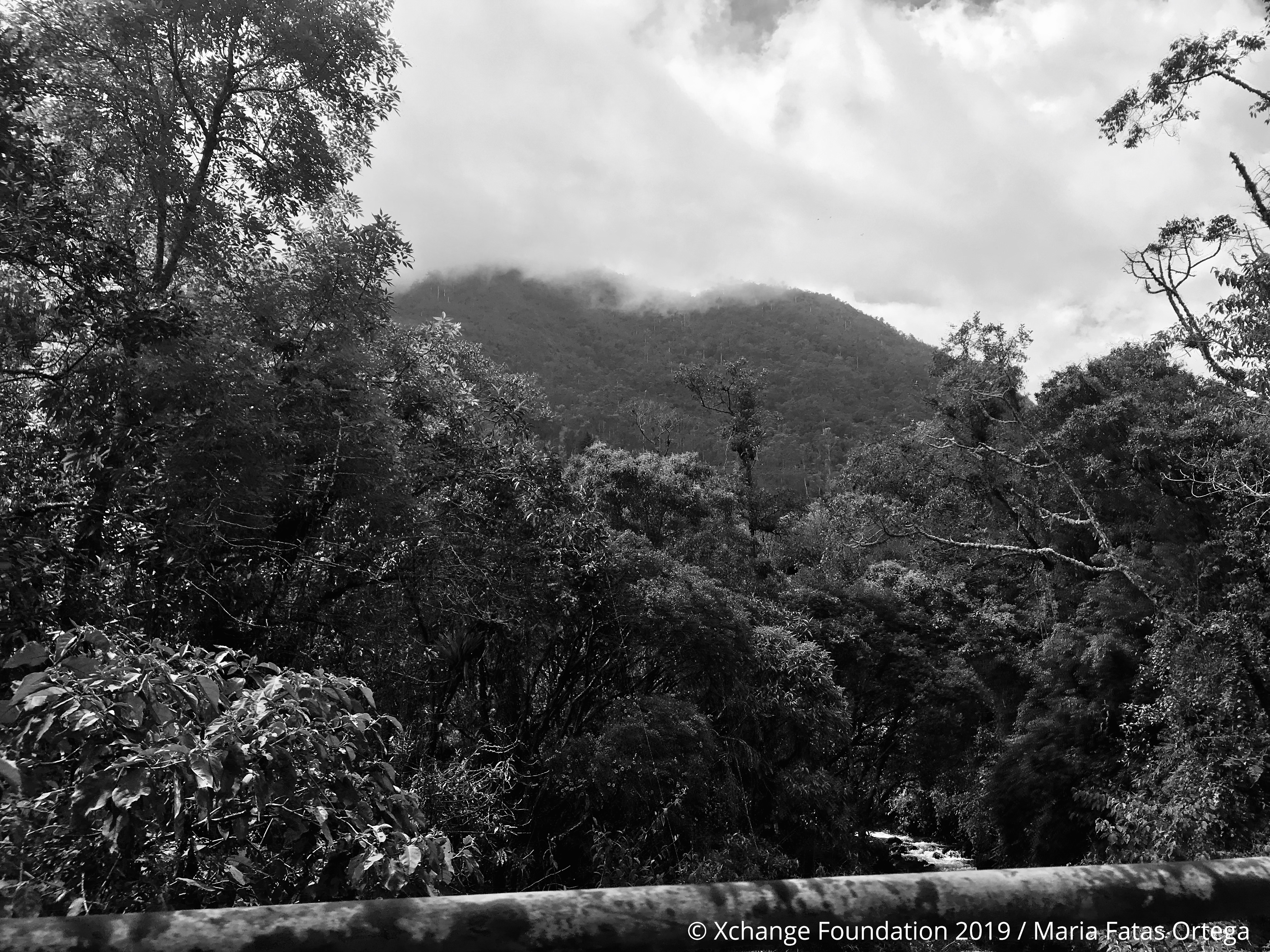
Methodology & Research Implementation
Research Objective
The aim of this video-report is to:
- Understand the reality of life in Venezuela and understand the push and pull factors that make people migrate,
- Explore the routes being taken by migrants on foot, as well as vulnerabilities and risks while on the move,
- Investigate what day-to-day life is in Colombia for Venezuelan migrants - what the main difficulties are and where there are significant needs gaps,
- Understand what Venezuelan migrants’ short, medium and long-term plans are.
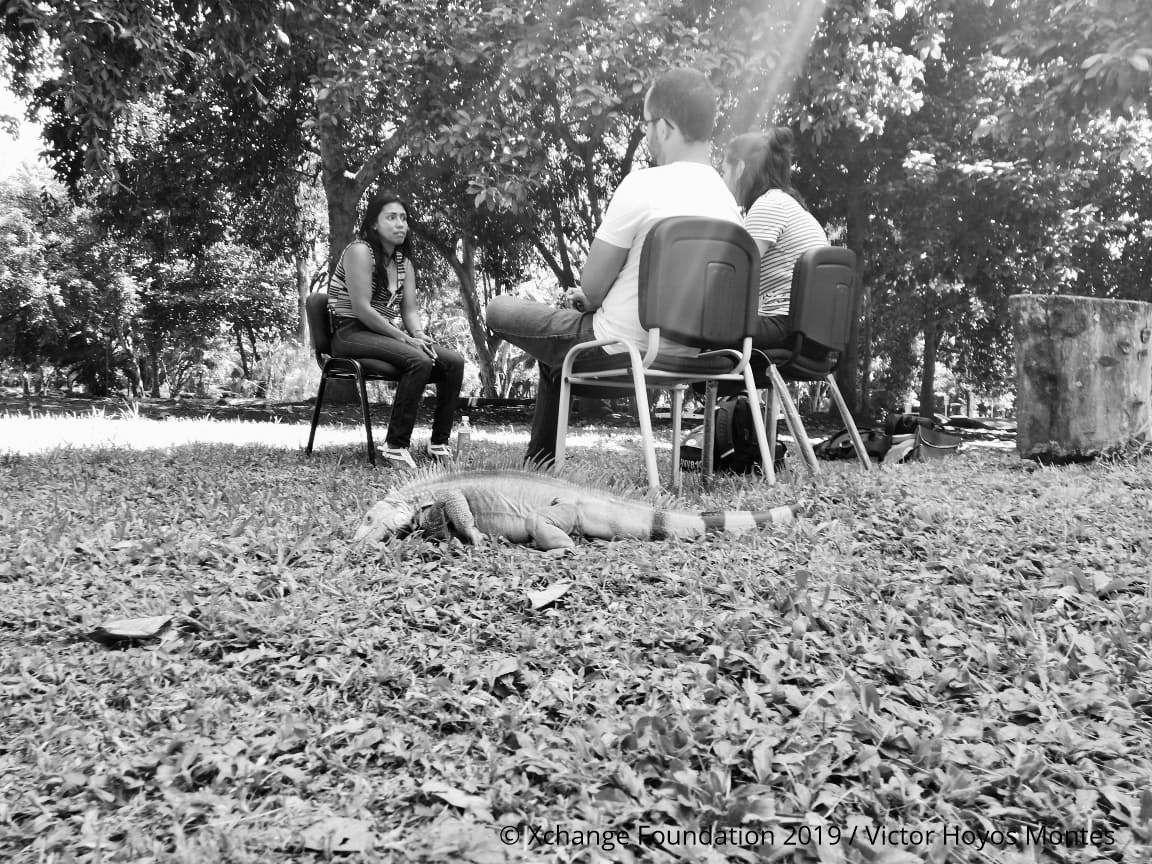
Research Design & Data Collection
In July 2019, Xchange conducted in-depth interviews with Venezuelan migrants in Cali, Colombia. The location was chosen due to its geostrategic relevance in the Venezuelan migratory routes. The interviews were carried out with the use of a semi-structured interview guide which was informed by informal discussions with key actors and stakeholders. All 15 interviews were audio recorded and filmed; parts of the recordings can be found in the video-report highlighting the key findings.
The interviews were carried out over the course of two weeks at multiple locations in Cali, Colombia. Participant recruitment was done with the help of two cultural mediators using an availability sampling technique; recruitment was continued until saturation was achieved in order to ensure a diverse, albeit non-representative, sample. All participants were informed in advance that a team of researchers was interested in understanding their experience in leaving Venezuela and their journeys, as well as the nature and objectives of the project. They were also informed that their participation in the interviews was voluntary and that they had the right to withdraw from the study at any time. Written consent was provided before starting any interviews, which included consent for being filmed and audio-recorded: 7 participants decided not to have their faces shown on camera, with 5 of them also deciding not to have their voices heard.
The sample comprised of 16 Venezuelan migrants, 5 men and 11 women, who had left Venezuela within the last year and had carried out all or part of their migration journeys on foot; two of them, a man and a woman, were interviewed together. Most participants had left Venezuela within the last 3 months; a few had left earlier and had spent months working in different parts of Colombia in order to fund their travels. Their time in Cali ranged from 3 days to 2 months, participants’ ages ranged from 18 to 49. All but one were parents to at least one child or expecting a baby, with 6 being the maximum of children any participant had. Two of the youngest participants were 6 and 8 months pregnant at the time of the interview. Participants occupations’ previous to migrating included shopkeeper, construction contractor, IT worker, army personnel, taxi driver, mechanic and casino worker.
The data collection team was comprised of 4 people: one Xchange researcher, two cultural mediators, and a videographer. The cultural mediators were trained in recruitment of participants and ethical considerations during research. Each interview was conducted by the Xchange researcher, with one of the cultural mediators and the cameraman present.
All interviews were carried out in Spanish. Once the data collection was finished, the interviews were translated from Spanish to English; the transcripts were subsequently coded and analyzed thematically. The key findings can be seen in the video-presentation. All participants’ names have been replaced with pseudonyms.
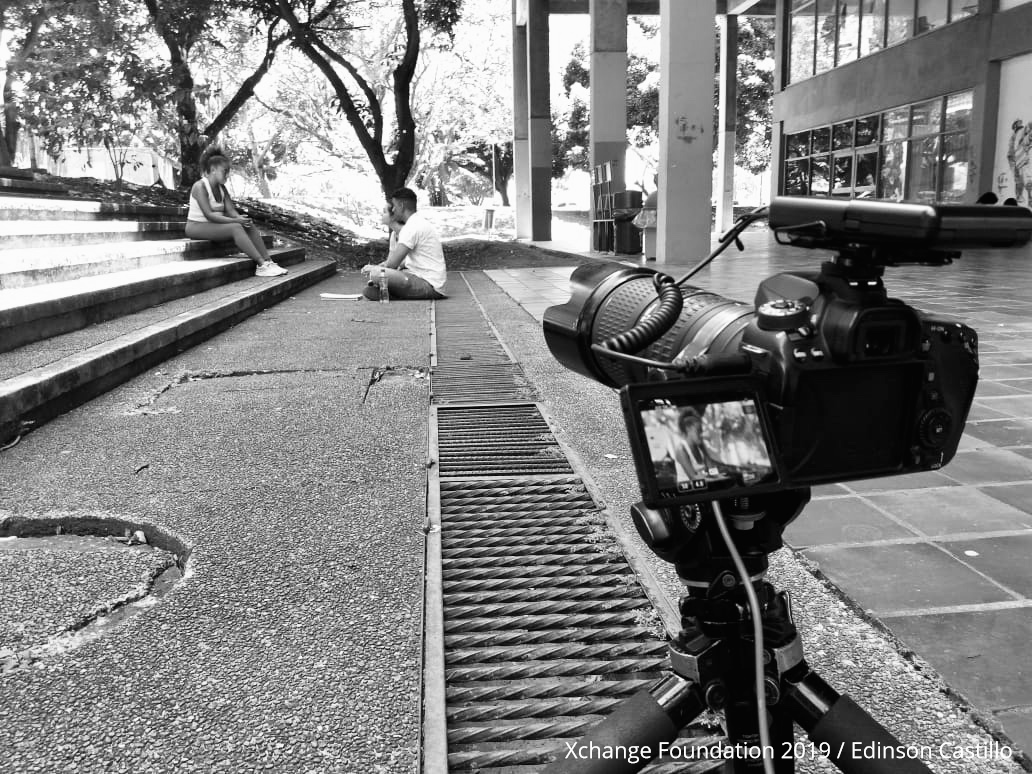
Limitations
As participants were migrants on the move, all of them lacked adequate and permanent housing, as well as means of contact (i.e. phones). This posed the biggest limitation as recruitment took longer than firstly anticipated, and coordination of some of the initially planned interviews failed to materialize.
Due to the nature of the study, some of the questions asked were highly sensitive and it is possible that social desirability bias was present as a way for the interviewees to preserve their own personal image. It was also worth noting that many of the interviewees expressed concerns for voicing their opinions freely, in fear of reprimands from the Venezuelan government.
Findings
Video-presentation of the findings - ©️ Xchange Foundation 2019
In this video-report, Xchange explores the experiences of Venezuelans migrating on foot in an attempt to understand what life in Venezuela is like, what the biggest challenges and risks are for the men, women and children migrating, what day-to-day life is like in Colombia and what their plans for the future are.
Push and Pull factors
Life in Venezuela
All participants mentioned scarcity of food as the main reason behind their decision to leave Venezuela. Although most of them were working at the time that they decided to migrate, they said that they were unable to afford food with their salaries. For those who were not working, not being able to afford basic goods was also the main reason that they chose to leave their jobs in the first place.
Lack of access to healthcare also ranked highly on participants’ reasons for migrating. Many went into great depths to discuss the lack of access to some of the most basic medicines and the fatal consequences it has had for Venezuelan citizens. Two participants had direct family members who had recently died due to lack of access to medical treatment. Another two participants had daughters with chronic illnesses that they were unable to get treatment for in Venezuela.
Every participant reported that Venezuelans are dying due to scarcity of medicines and doctors. When asked what they do about this, a few said that they live everyday trying not to get ill, because if they do get ill, they will either not be able to afford the medicines needed or hospitals won’t have them in stock.
Additionally, participants reported that power cuts are extremely common, leading to no electricity in the homes, which worsens food insecurity, or no electricity in hospitals, which severely limits access to medical care. Due to hyperinflation, notes are not used in many everyday purchases, with people using cards instead; however, as one of the participants explained, power cuts - which sometimes last 2 weeks at a time - leave them unable to use cards, and, as a result, they are unable to purchase basic goods such as food or nappies. Another participant, who had not been to Venezuela in 6 months, joked about how she does not even know what the price of anything is anymore, as “prices are constantly changing”.
All participants spoke, though not always openly and on camera, about the culture of fear present in Venezuela. The fear of reprimands was palpable, and it was the deciding factor behind some of the participants’ decision to not appear on camera, more so for those with family still in Venezuela. As one participant explained:
In line with this, one of the participants - who belonged to the Venezuelan military - reported migrating due to fears of being forcibly imprisoned; she reported that military personnel are not allowed to leave their positions, which leaves military deserters with the only option of running away or facing time in prison. When asked why, her rationale for leaving was the same as all other participants who migrated despite having a job:
Making the decision
Most participants said that migrating had been on their minds for some time, however, some shared how certain life events had acted as the catalyst to their decision to finally leave. For three participants, losing a direct family member due to lack of proper medical care was the triggering factor.
It was also common amongst participants to have sought better opportunities elsewhere before deciding to migrate southward. One of the participants migrated internally to a rural part of the country, in hopes that there would be better access to food. Multiple participants also moved first to the border towns of Cucuta and Arauca, both in Colombia, where they worked for months before deciding to continue their migration south. In these border towns, it was easier for them to find higher-paid informal jobs selling ice-cream, cigarettes or coffee on the streets, allowing them to send money back to Venezuela.
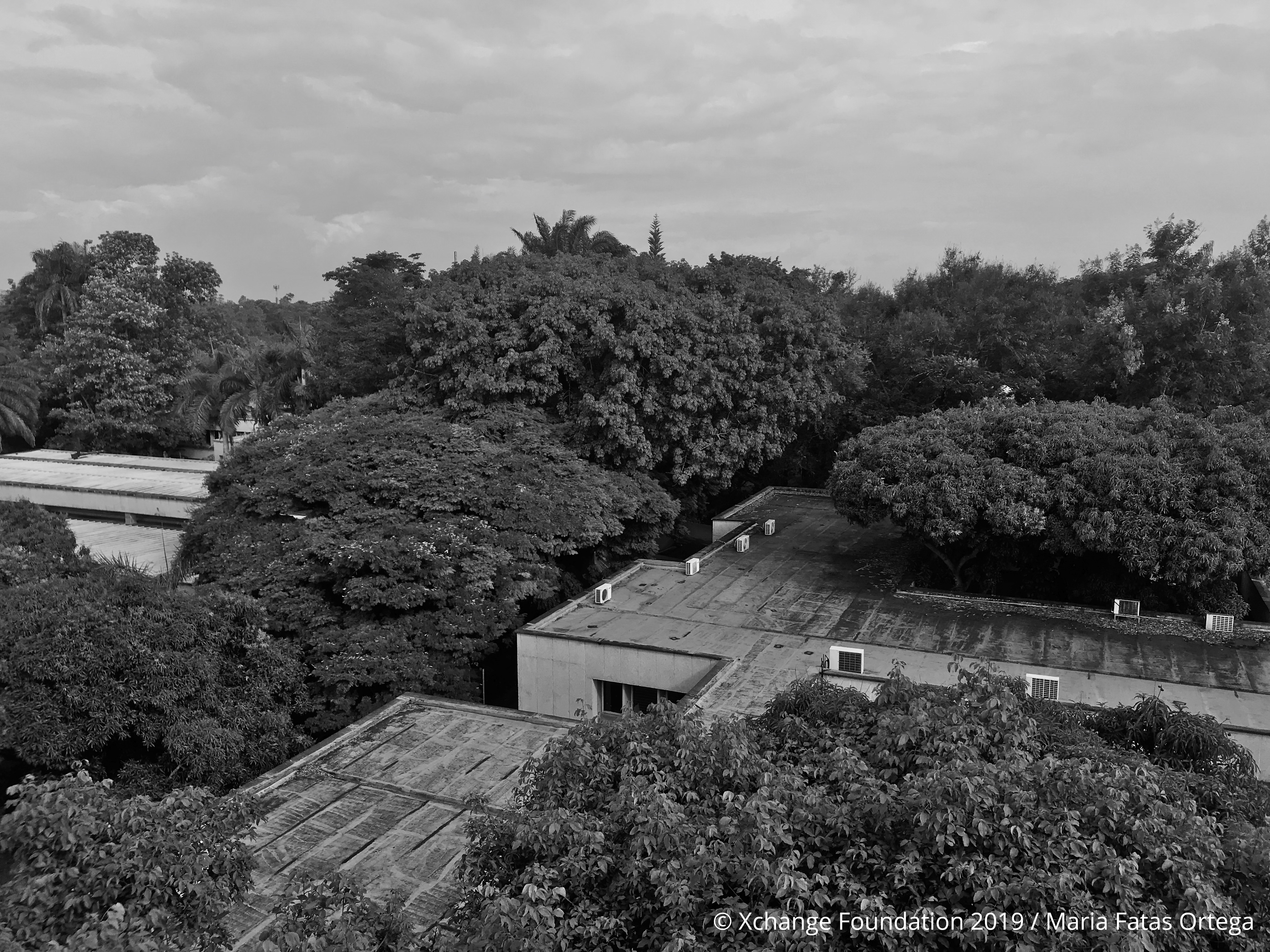
The journey
All of the participants traveled in groups; for some this included moving with extended family members who were also leaving Venezuela, and for others it included leaving Venezuela with their partners and children and joining groups of migrants along the way. One of the participants left her hometown in Venezuela pregnant and on her own; however, she soon joined a large group of fellow Venezuelans.
Cucuta and Arauca were the two entry points used into Colombia by the interview participants, with 11 of the interviewees crossing through Cucuta and 4 through Arauca. Only 3 of the participants crossed the border legally; the rest did not have the correct identification documents and, as a result, crossed illegally through the river – or ‘trochas’ as the crossing is referred to. Controlled by smuggling networks, the river crossing has a fluctuating price; some of the participants crossed for free or very little – 200 VES [0.008€] –, whereas others paid 10.000 or 20.000 COP [2.6 or 5.2€] per person.
Most participants followed similar journeys, with Bucaramanga, Bogota and Ibague being the main transit points. Some of the participants took buses for the first part of their journeys before their money ran out; a few walked the entire way, and the majority walked most of the way, getting lifts from strangers on some parts of their journey. A few mentioned receiving free bus passes from local religious groups for parts of the journey.
Some of the participants decided not to bring their children to Colombia with them, leaving them instead with family members back in Venezuela. A few participants said they had not thought about it as an option as they did not want to put their children through the hardships faced along the journey. Two of the participants also recommended that children are left behind, despite them bringing their children along.
When asked what the hardest part of the journey was, all participants mentioned harsh weather conditions, violence, and physical exhaustion as the top three. Low temperatures were a particular problem at different stages of the journey. All participants reported either hearing stories, or seeing migrants suffering from extreme cases of hypothermia with some cases ending in death. This was reported mostly around ‘Los Paramos’, also described as ‘El Paramo’ or ‘El Paramo de Berlin’, which is located in the north-central Colombian department of Santander found in the Andes Mountains. Here, many migrants opt to continue walking overnight in an attempt to reach their destinations faster, and with temperatures dropping drastically at night this leads many to face the sometimes-fatal consequences of sub-zero temperatures. Such conditions make attempting the journey with a disability extremely challenging – this was an issue for one of the participants, and another participant’s daughter. A participant also reported having to leave her husband on the border, with 5 of her children, as he also suffered from a physical disability which made it impossible for him to attempt the journey on foot. In addition, most of the participants traveling with children reported that their children got ill at different points of the journey; some reported being able to buy medicines over the counter. However, three of them needed care from trained professionals, one of which also lacked access to medicines.
All of the participants reported knowing about the existence of ‘the Inchas’, with the majority having had interactions with them on their journeys. As explained by one of the participants, the Inchas are groups of Colombians who target Venezuelans travelling on foot; they hide in different parts along the journeys and come at them with machetes and knives, sometimes robbing or assaulting them, or even raping the women. One of the participants reportedly fought off the Inchas, who wanted to rob him and the group he was traveling with. Two of the participants had altercations which ended with an assault and them being robbed of their documents. All participants reported travelling in groups to try to minimize the dangers.
During the journey, most reported having been gifted lifts by random strangers. All participants told stories of being given rides in ‘colas’ and ‘mulas’; the former are usually private cars that offer lifts for free to Venezuelan walkers, the latter are usually bigger trucks that take migrants to certain places generally for money. When free lifts from strangers failed and they were too exhausted to walk anymore, some of the participants resorted to begging for money to take buses. Some even contemplated returning to Venezuela as they found the journey too difficult; they all reported seeing migrants turn around and attempt to make their way back to Venezuela.
Despite all of them travelling in groups, some reported being separated from their partners along the journeys. For some this happened because women were able to get lifts more easily than men, especially if they had their children with them. One of the participants had no communication with her husband for the 7 days they were separated, and for another participant communication was limited to a few Facebook messages she sent from phones borrowed from fellow migrants. A few participants also came across unaccompanied minors; two of the participants were travelling with partners who were minors.
One interviewee had done the journey twice, following an initial deportation back to Caracas from Peru. His second journey was reportedly the hardest out of the two, as this second time he was not traveling with his wife, nor any more women or children, which resulted in him being offered less lifts. He also stated that he was denied food at the shelters along the journey, as having sought aid from those places in the past meant he was not eligible to receive it again.
Contact
Those with children and family still in Venezuela stated having regular contact with their relatives. However, as resources are limited, many do not own a mobile phone and as a result have to borrow phones from fellow Venezuelans in order to contact friends and family. One of the youngest participants reported talking to his mom as often as he could but he didn’t have enough money to pay for the calls. However, he stated that his mother was not aware that he was sleeping on the streets and begging in order to survive. A participant whose wife was in Ecuador had not seen her nor their baby in over two months, and was only able to communicate through Facebook. He shared his hopes of getting the money to be able to join them in Ecuador soon.
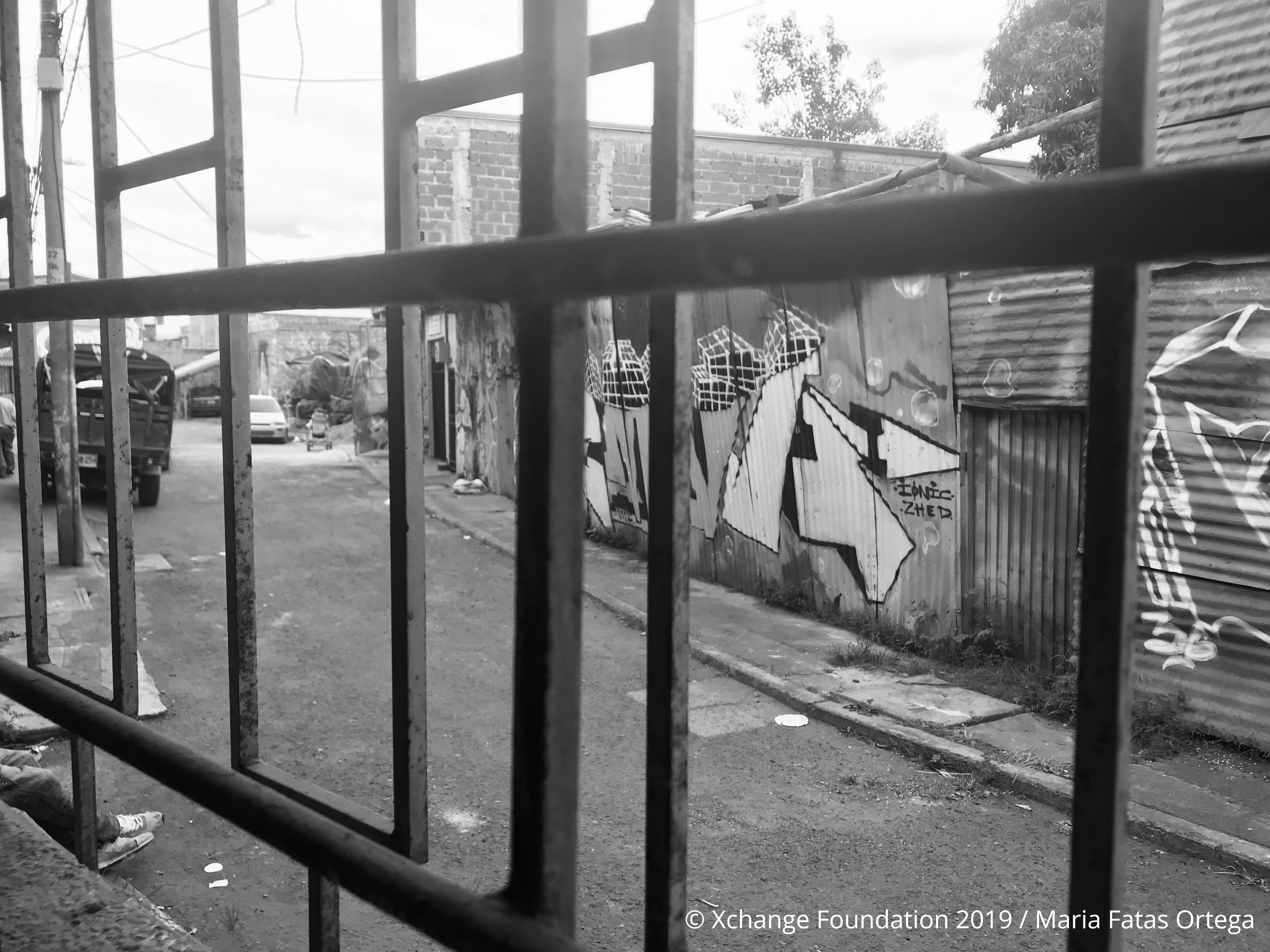
Life in Colombia
The majority of participants had received a lot of help from strangers, both during their journeys and while in Colombia. Acts of solidarity between Colombians and Venezuelans were present in almost all of the interviewees’ experiences, though it is important to highlight that whilst help from strangers was mentioned, interviewees reported they felt that they had no rights in Colombia. Most of them were sleeping outside the bus terminal in Cali, where they were allowed to sleep during the night but were forced to pack up their things and move during the day. Three of the interviewees were using some of the money they made selling sweets to pay for a room where four adults, one of them pregnant, and a baby would sleep. As none had formal jobs, they spent their days seeking employment, begging on the streets and selling sweets at traffic lights for spare change. The only help they were receiving was a free lunch at a soup kitchen.
All participants struggled to adjust to their new reality in Colombia. Having worked most of their lives they all struggled to beg, with the majority stating that they felt shame about having to ask strangers for help, something that none of them had had to do before.
When asked what the hardest part about life in Colombia was, they all agreed it was the lack of employment opportunities. When seeking employment, migrants are asked to have a job permit, and none of the participants had one nor knew how to get it, though one of the participants reported being told there is a web page that will allow them to register – the page, however, is currently closed. As a result of not having a job, migrants are left jobless and homeless, as renting a house without documentation and a job contract is impossible to do legally.
Despite the challenges, none of the migrants regretted their decision to come to Colombia. When asked what surprised them most about life in Colombia, this is what they said:
All of the participants highlighted the bonds that are created between fellow migrants during the journeys, as well as during their stay in Colombia. These bonds led to the creation of strong relationships; for some, in the form of older migrants “adopting” younger ones.
All participants, however, were able to share at least one incident where they had been discriminated against by locals. A few of them reported feeling looked down upon, as if they were “insects”.
Looking into the future
Colombia was the initial destination for six of the participants; the others had initially planned to continue traveling towards Ecuador, Peru or Chile. Many of the participants had changed their plans following the difficulties on the journey, with many wanting to find jobs and settle in Cali.
Another participant was planning on continuing to Lima, Peru, shortly after the interview; having only been in Cali for 3 days, she was waiting for her husband and male family members that were still walking to continue the journey together again. She also shared fears of being unable to join her husband’s brother in Peru as they had heard rumors of increased border control at the Peruvian border. In fact, when asked none of the participants were aware of the requirements needed for southbound travel.
Ecuador was mentioned as the most popular destination for those Venezuelans seeking better opportunities beyond the Colombian border, with Peru also ranking highly.
None of the participants considered returning to Venezuela to live; when asked what would have to change for them to want to move back the most popular answer was “everything”.

Conclusion
Over 4 million Venezuelans have left the country since 2015, and it has been estimated that by the end of 2019 the number could reach over 5.3 million. Though there’s multiple intervening factors, the collapse of the Venezuelan economy has been instrumental in the difficulties to purchase the most common food items and access the most basic medical treatments; indeed, scarcity of food and medicine were the two most common reasons behind participants’ decision to leave their country.
All but three interviewees crossed the border illegally and without identification documents, as many in Venezuela are unable to access or renew legal documents - such as birth certificates and passports - that would allow them to leave the country legally. A lack of legal status means they are invisible to the state and are unaccounted for, leaving them in a vulnerable position, particularly so in the case of unaccompanied minors, single women and children. This also places them at greater risk of abuse from criminal gangs and human traffickers whilst on the road, and of exploitation once they have reached their destination.
Interviewees’ travel on their migration journeys was varied, with some able to get lifts from strangers and not having to walk long distances, while others had to walk all the way. Following the border crossing, none of the participants had a concrete plan as to their next steps. No government or civil society help was reported along the journey, excluding shelter points found in some key locations along the Andean Mountains. With most relying on the generosity of locals for water and food, all migrants faced harsh travelling environments which for many resulted in medical complications from dehydration, exhaustion and lack of food – particularly for children. In addition to extreme weather conditions, violent incidents were also widely reported.
The last wave of Venezuelan migration is composed of more children and single women traveling on foot than ever before, while adults attempting the journey are characterized as middle-to-low income families with limited resources and support, leading to a greater need for support from host communities. In addition, most of the participants showed an overwhelming lack of understanding on what the legal migration and resettlement procedures were. Those with the right documentation lacked knowledge on what the procedures to get residence or job permits were, and those without documentation failed to understand how they could regularize their presence in Colombia. This was also the case for those intending on traveling southward. Understanding this shift in migration demographics is vital if appropriate help is to be given and vulnerable members of society supported.
Though instances of discrimination were present, all interviewees felt supported and respected by Colombians. Indeed, the country has maintained an open-arms approach despite hosting over a million Venezuelans, though the measures taken leave room for improvement. The country handed out, until April of this year, Special Permits for Permanence - PEP, in Spanish - to Venezuelans who arrived in the country with a passport prior to December 2018, as well as permits for Venezuelans transiting the country to reach alternative destinations. These two measures, however, exclude those that arrived in the country after December 2018 and those who did so without passports. None of the participants in this study fulfilled these requirements.
Ecuador and Peru, the two most popular countries for Venezuelan migrants after Colombia, have toughened their policies in recent months, with Peru changing its visa policy thereby making it impossible for migrants without a visa to access the country; Ecuador has followed in those footsteps by implementing a similar visa system. Limiting existing legal migration paths will only increase migrant’s vulnerabilities.
As the situation is Venezuela remains turbulent, the likelihood of a swift and prompt return is impossible, and with more Venezuelans leaving the country every day, there is a need to reassess the policies at play. A concerted effort is needed for a more comprehensive and consistent policy framework that supports migrants during transit, as well as informing them of their rights and assisting them in the process of integration. In addition, Colombia and its neighboring countries cannot manage an influx of such proportions alone; international assistance is imperative in providing a holistic response.
This report is not representative of the last wave of Venezuelan migration but rather an insight into the experiences of Venezuelan migrants on the move. Keeping migrant voices at the center of research is of paramount importance in raising awareness, identifying gaps and advocating for better policy creation.
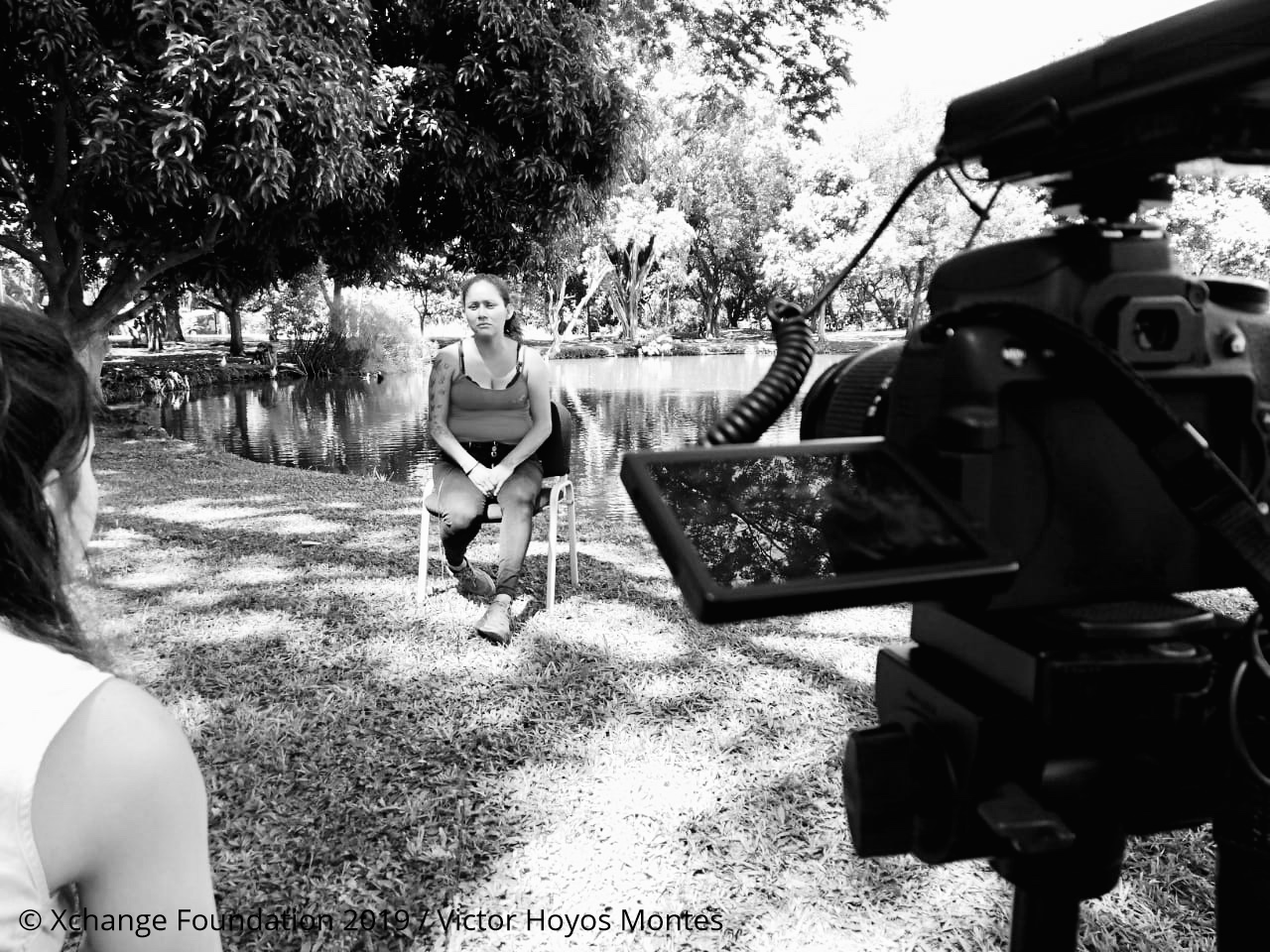
Acknowledgements
Coordination, Research, Analysis, & Report-writing: Maria Fatas
Report-writing, Peer review: Kate Hughes
Report-writing: Molly Thompson
Contact Us
As an information and research initiative, we are eager to work with a wide spectrum of stakeholders to exchange information and knowledge.
We are looking for partners and funding organizations to support us in conducting a new round of surveys. Please, feel free to send us your proposals.
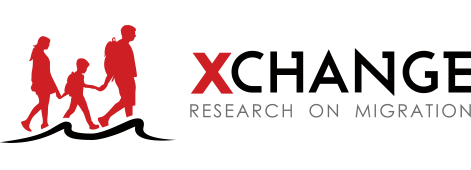
Copyright © Xchange.org 2019